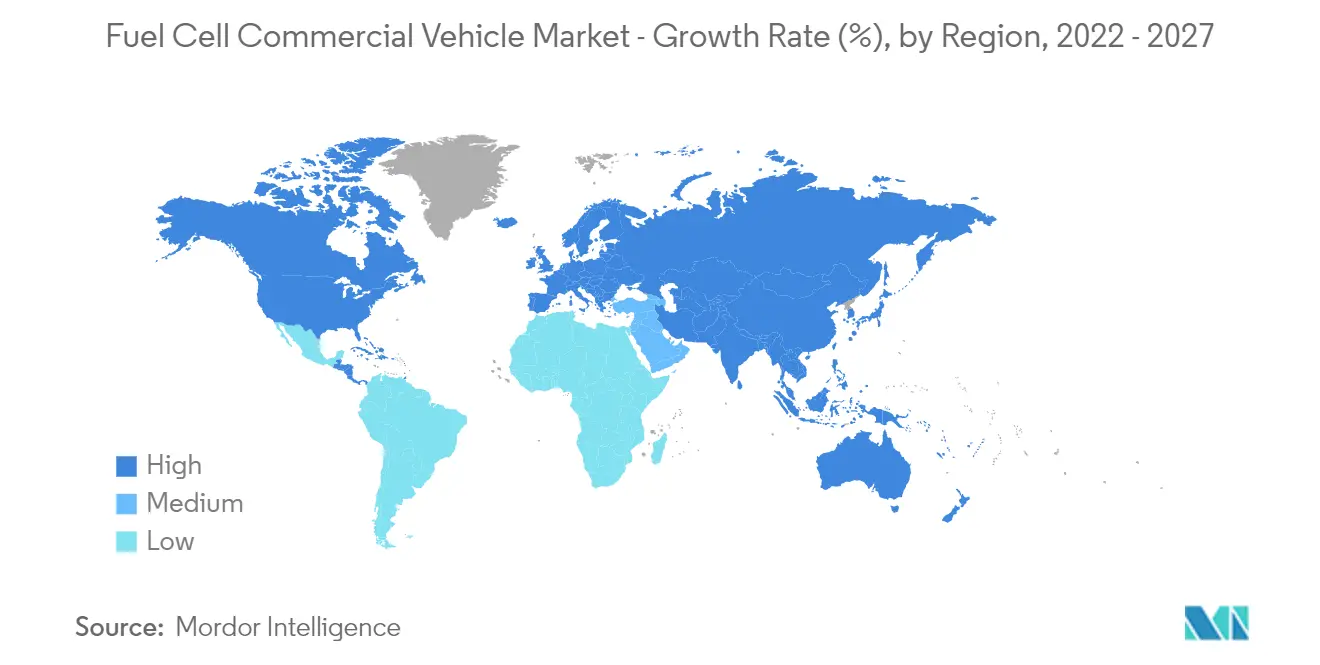Market Trends of Fuel Cell Commercial Vehicle Industry
This section covers the major market trends shaping the Fuel Cell Commercial Vehicle Market according to our research experts:
Enactment of Stringent Emission Norms for Commercial Vehicles
With the growing environmental concerns, governments and environmental agencies are enacting stringent emission norms and laws, which are expected to increase the manufacturing cost of fuel-efficient diesel engines in the coming years.
As a result, the new commercial vehicle diesel engines segment is expected to register a sluggish growth rate in the short term, thereby increasing the demand for fuel cell commercial vehicles. Most diesel engines can convert about 40%-46% of the fuel energy, while the remaining energy is lost in the environment as heat through exhaust emissions and cooling systems. The burden on commercial vehicle manufacturers has increased with the enactment of the Euro VI emission for heavy-duty engines.
Additionally, in December 2000, the US EPA signed emission standards for the model year 2007 and later heavy-duty highway engines. The California Air Resource Board (CARB) adopted virtually identical 2007 heavy-duty engine standards in October 2001. The rule included two components: emission standards and diesel fuel regulations.
The emission standards included new and stringent limits for PM (0.01 g/bhphr) and NOx (0.20 g/bhphr).
In North America, the US GHG emissions and fuel efficiency standards for heavy- and medium-duty vehicles were jointly developed by the Environmental Protection Agency (EPA) and the National Highway Traffic Safety Administration (NHTSA).
The NHTSA developed fuel consumption standards under the authority of the 2007 Energy Independence and Security Act (EISA), while the EPA developed a GHG emissions program under the Clean Air Act.
The GHG program includes CO2 emission standards, emission standards for N2O and CH4, and provisions to control hydrofluorocarbon leaks from air conditioning systems.
In the United States, heavy-duty vehicles, such as combination tractors/trailers, vocational vehicles, heavy-duty pickup trucks, and vans, must achieve up to 27% CO2 emission reductions over the 2017 baselines by 2027.

Asia Pacific is Expected to Lead the Market
Asia-Pacific is expected to lead the market owing to the immense automotive industry size in major countries like China, India, Indonesia, and Thailand. The region is also home to major manufacturers of fuel cell vehicle technology. Toyota is conducting extensive R&D to develop hydrogen fuel cell-powered vehicles during the forecast period.
Additionally, several new developments in the way of investments into fuel cell-powered vehicles are further expected to increase the demand for fuel cell commercial vehicles in the region. Several major cities and countries have released their goals to reduce commercial vehicle emissions, with plans for hydrogen technology and investments in this sector.
The Japanese government is banking on hydrogen vehicles to achieve carbon neutrality by 2050. It has set an ambitious target of having 200,000 FCVs on the road by 2025, compared to about 3,600 in 2019, along with 320 hydrogen filling stations under its third Strategic Roadmap for Hydrogen and Fuel Cells.
Japan-based Toyota and Honda Motor Co. Ltd have been the pioneers in commercial passenger hydrogen models. However, South Korean rival Hyundai Motor Co. also entered the fray, encouraged by its government's plans to produce 6.2 million FCVs and build at least 1,200 refilling stations by 2040.

